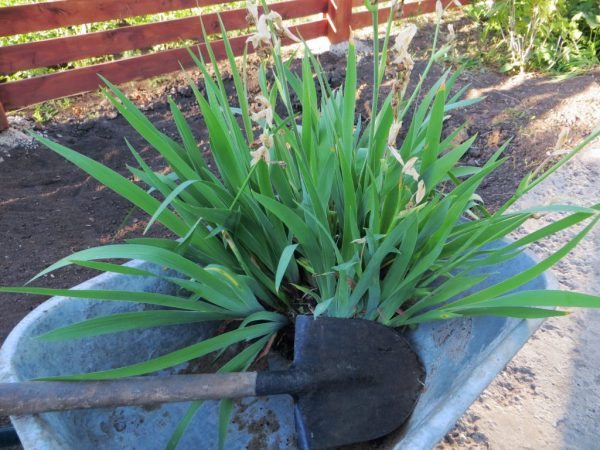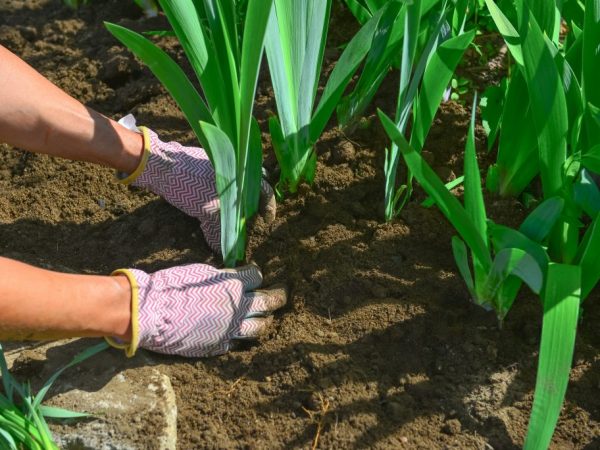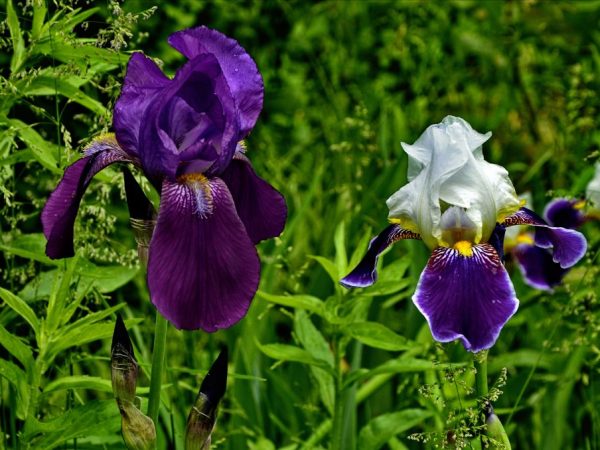How to plant irises in autumn - step by step instructions
Some bulbous perennials perfectly tolerate wintering, even in regions with prolonged frosts. And if gladioli simply freeze out, then tulips and irises will only get stronger and acquire increased immunity, delighting with abundant flowering in spring. According to many gardeners, planting irises in the fall will significantly save time for other spring work, and create conditions for the early appearance of these delicate and luxurious flowers.

How to plant irises in autumn - step by step instructions
Features of autumn planting
The amazing vitality of the flower allows you to freely experiment with the timing of planting in the open field, choosing the optimal time for good rooting and the subsequent formation of peduncles. The simplicity of irises made it possible to grow them in a wide range of climatic zones from Siberia to arid southern regions.
Breeders have bred many hybrids that have a color from white to almost black, with a purple tint. Such a riot of colors only confirms the name of the flower, which is translated from Greek as "rainbow".
A perennial grows quietly in one place up to 5-6 years without a transplant and daily care.
If a change of location or planting of an overgrown bush is required, then autumn or the last days of summer are usually chosen for this - during this period the flowering has already passed, the root buds are sufficiently strong and division will not disrupt their structure.
Important: in the fall, the activity of pests and pathogenic bacteria decreases, the iris will take root more successfully and wake up earlier in the spring.
Optimal timing
Breeding work on the development of new, frost-resistant varieties made it possible to plant irises in Siberia, in the Urals and in the Moscow region.
Preference is given to varieties:
- White moth;
- Ruby Morne;
- Hang glider;
- Queen's show;
- Hubbard.
Species of bearded iris are more capricious, but subject to the technology and planting dates, they also grow successfully in open ground.
By region
For northern regions, it is recommended to plant irises in early September. They will have time to take root and gain strength.
Autumn planting is preferable for bulbous varieties, and those that have a rhizome are best left for the spring.
For the southern regions, the planting date can be postponed to the end of September or even mid-October.
If irises are planted too early, they will take this as a guide to action and the buds that have fallen asleep for the winter will awaken.
The time remaining before the first frost serves as a guideline. Should be in stock for about a month.
Lunar calendar
Each year, new recommendations are made for planting and caring for various crops in accordance with the lunar cycles.
There are special rules for bulbous, root and fruit trees.
- The general condition is a ban on any planting on the days of the new moon, full moon, the day before and after them.
- Planting is usually done on a waxing moon, pruning and weeding on a waning moon.
Site preparation

Irisam is suitable for a sunny area
When choosing the optimal place for a flower bed, it is worth remembering that irises cannot live without the sun. In shaded areas, they will not bloom or will quickly degenerate into nondescript inflorescences.
But their moisture needs are different and depend on the species. Swamp iris feels great in wet areas, but this is rather an exception to the rule.
It is much easier for these flowers to tolerate a lack of moisture than its excess, therefore they are often planted on hillocks or artificial hills.
Correct planting guarantees lush flowering for 4-5 years, until the overgrowth of the bush.
General requirements for the site:
- it is open and sunny, protected from the wind;
- deep bedding of groundwater;
- lack of close proximity of fruit trees;
- fatty nutritious loams are desirable;
- low or neutral soil acidity.
To prepare for planting, the soil is dug up with compost or humus with the addition of wood ash. If the composition is poor, then potash-phosphorus fertilizers must be applied. It is better to leave nitrogen complexes for the spring.
In the fall, the plant should take root, not grow.
Please note: the root system of irises is located very close to the surface, so the depth is calculated based on the size of the bulb or rhizome. It should not exceed three times the height.
Landing technology
Bearded and beardless varieties are very similar in planting technology and subsequent care - they are bred using roots or seeds.
In the second year, the root system already allows for single division.
For 4-5 years, she simply requires it, otherwise the plantings thicken and the quality of flowering deteriorates greatly.
Breeding with roots
A well-grown healthy bush is selected for division. A month before transplanting it is stopped fertilizing, watering is reduced by 2 times.
To get planting material, you need:
- dig in a bush around the perimeter;
- carefully pull it out without breaking off the small roots;
- dry;
- with a sharp knife, divide into segments, each of which will have a root section of at least 10 cm, a fan of leaves, several dormant buds;
- cut the leaves to 1/3 of the length;
- treat the places of cuts at the root with crushed coal;
- as an option, disinfection is carried out with ash or manganese solution;
- if a part of the rhizome without leaves is intended for planting, it is preliminarily kept in the sun (2-3 days) to improve growth;
- a mound is formed in the middle of the hole, raising the rhizome above the ground;
- the bush sits on an elevation, the feeding roots spread out along its slopes;
- neighboring plants are planted no closer than 15 cm, large varieties require a distance of 45-50 cm;
- bulbous species deepen no more than 12 cm.
It is worth considering: if you need to quickly breed the variety, you can use small fragments of the rhizome without leaves.
For good growth and abundant flowering, new bushes are planted with the rhizome in a southerly direction. This factor must be taken into account when planning the size of the flower garden.
The plant is planted correctly if the leaf fan is strictly vertical, the root part and neck protrude slightly from the ground. After 2-3 weeks, the plant should take root confidently.
Growing from seeds

Rare varieties are grown from seeds
Sometimes you want to plant some special variety that your neighbors and acquaintances do not have. Such plants are ordered online or bought in specialized stores. There they are sold mainly by seeds. The process will last longer, flowering will have to wait 2-3 years.
Marsh, Siberian, varietal, Japanese species are grown from seeds. The disadvantage is the possibility of cross-pollination and violation of parental characteristics.
Outwardly, the seeds are large, brown. Ripen within 2-2.5 months in seed pods after flowering.
Autumn sowing is preferable, because when the seeds are stored, their germination rate decreases rapidly.
The term is not fundamental, the main requirement is at least 3-4 weeks before the first frost.
- Ridges are prepared in advance at a distance of 20-35 cm.
- The seeds are buried 2 cm, covered with fallen leaves, mulch and a double layer of geotextile on top.
- Seedlings are transplanted to a permanent place in the spring, after the soil warms up to +15 degrees.
Standard summer care consists of watering weekly, fertilizing 3 times per season, and weeding regularly.
Help: it is unacceptable to use manure, in any form.
Seedling care and preparation for winter
After planting, the plants are left alone for 3-5 days, then abundant watering is required through a watering can or a splitter, so as not to erode the soil from the roots. Then, to preserve moisture, the hole is sprinkled with dry sand. The main care is timely weeding.
Important: you will have to weed by hand so as not to damage the roots of the iris that are close to the surface.
No additional fertilization is required for winter. For the preservation of plants in the winter, recently transplanted bushes with the first frost are mulched with sawdust or spruce branches. In spring, the mulch layer is removed as early as possible, at the very beginning of the thaw season.
Usually, with proper planting and successful rooting, the bush blooms the next season. After a year, it can be propagated by dividing the rhizome. In rare cases, flowering is delayed, then you need to be patient. Apparently, there was a special variety that requires more time for acclimatization.
Autumn plantings have a beneficial effect on irises, reducing the risk of developing fungal diseases of rhizomes and bulbs, saving the strength of the plant for an earlier start of growth and flowering.
It is worth giving a few days in September or early October to sowing seeds or transplanting overgrown bushes - and in the spring to enjoy the rainbow colors, to lay new flower beds from the sprouted seedlings.

